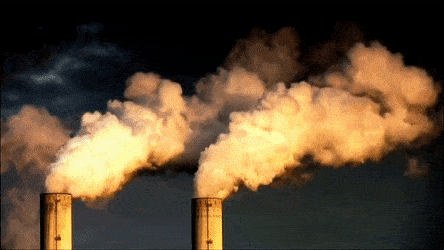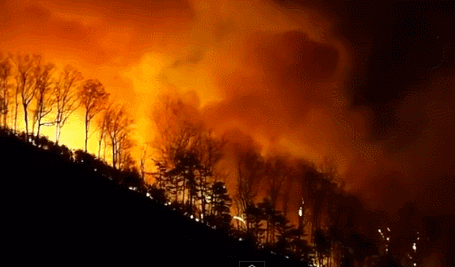
Climate change has lead to increase of temperatures, changes in precipitation, rising sea levels, and increases in the frequency and intensity of extreme weather events. These events do not occur in isolation and are a big threat to our health. They affect the air we breathe, the weather we experience, and the food and water we consume. According to research published in the Lancet journals, climate change poses one of the “greatest threats to public health in modern times.” In fact, according to the World Health Organization, between 2030 and 2050, climate change is expected to be the cause of almost 250,000 additional deaths per year, due to malnutrition, malaria, diarrhea, and heat stress.
In 2016, the US Global Change Research Program released a report that analyzed how global climate change is affecting human health in the United States. The report stated that climate change affects human health in two main ways. The first is by altering the severity or frequency of health problems that are naturally affected by climate or weather. The second way is by causing unprecedented health problems or threats. Although people in developing countries may be most at risk to health issues, climate change can threaten the health of even the wealthy in the United States. Every American could potentially suffer climate change related health impacts. The poor, some communities of color, immigrant groups, indigenous people, children and pregnant women, the elderly, people with disabilities, and people with medical conditions will be especially affected. The severity of the health risks depends on many different factors. These factors include whether the community has proper public health and safety systems, as well as the person’s age, gender, behavior, location, sensitivity to health threats, level of exposure to climate change impacts, and economic status.
Heat and Physical Health

There will be an increase in heat-related health problems and deaths in the US as climate change has caused warmer average temperatures, hotter days, and more and longer heat waves. Being exposed to such extreme heat can lead to stroke and dehydration, as well as cardiovascular, respiratory, and cerebrovascular disease. Heat exhaustion is a common reaction to severe heat and heat waves, and causes symptoms such as dizziness, headaches, and even fainting. It is typically resolved with rest and a cool environment, as well as hydration and a replenishment of electrolytes. When a heat wave is sustained, other serious health issues can arise, like a sunstroke or organ damage. In fact, 23 years ago a Chicago heat wave killed approximately 692 people and at least 3,300 checked into the emergency room. Large metropolitan areas like Chicago, Cincinnati, Philadelphia, and St. Louis have seen notable increases in deaths due to heat waves. Those that spend more time outdoors will naturally be more vulnerable, due to their higher exposure to extreme heat. Children, the aging population, pregnant women, and people with certain medical conditions have a harder time regulating their body temperature, which means they are also more vulnerable. Technology such as air conditioners can help overcome these effects and reduce the projected increases of deaths by extreme heat. However, those with a lower income or aging adults may not have access or the financial means to purchase an air conditioner.
Climate Change and Mental Health
Increased temperatures and climate change are also negatively affecting mental health. A study published in the journal Proceedings of the National Academy of Sciences was conducted using two million US residents between 2002 and 2012. Each subject reported the state of their mental health for 30 days. The study reported that as an average, when the temperature was above 86 degrees Fahrenheit, or when it rained for more than 80% of the 30 days, the subjects had increased stress and depression. Marshall Burke, an assistant professor in the Department of Earth System Science at Stanford University stated that there could be “a plausible biological linkage between temperature, thermal regulation, and how the brain regulates its own emotion.” A different study published in the journal Natural Climate Change found that an increase of even one degree Fahrenheit was correlated with a .68% increase in US suicide rate. This means that climate change could be linked to over 14,000 suicides by 2050. Although more research is needed in order to figure out the exact causes of the increase, the study states the reasons are likely linked to economic factors or biological changes. People coping with the negative impacts of severe weather conditions, such as wildfires that destroyed their homes or floods that washed away their crops, can experience symptoms such as PTSD, depression, and anxiety. Psychologist, researcher, and associate professor at the University of New Orleans Carl F. Weems stated that “The more severe and intense your exposure to traumatic experiences during a disaster, the more likely that you will have severe mental health symptoms. If you watch someone die or your house floods, you tend to have more intense effects.” The correlation between rising heat levels and mental health could be overcome in the future due to technological or physiological adaptations.
Climate Change and Air Quality

Pollution, wildfires, increased temperature, increased carbon dioxide levels, and changing weather patterns negatively impact air quality. According to a study published in The Lancet, over 8 million people die prematurely every year because of air pollution. Fossil fuel pollutants can create a mix of solid particles and liquid droplets called particulate matter. According to a study published in The Lancet, this matter can then enter a person’s lungs and even bloodstream, aggravating asthma, decreasing lung function, and increasing risk of cardiovascular events like strokes.

Wildfires also create smoke and pollute the air, worsening air quality. Both the frequency and severity of wildfires are supposed to increase as the climate changes. A 2011 report from the National Research Council discovered that even an increase of 1 degree can lead to a 400% increase in areas affected by wildfires.
Scientists are also predicting that increased temperatures will increase frequency of unhealthy amounts of ground-level ozone, especially in areas in the US that are already polluted. Ground-level ozone is a component in smog, which is a harmful air pollutant. People exposed to greater amounts of it have a higher risk of prematurely dying or having respiratory problems. It can damage lung tissues, reduce lung function, and inflame airways, making asthma or other lung diseases worse. Heat waves cause increased levels of ground-level ozone, as the warm, stagnant air that lingers after heat waves is an optimal condition to form ozone. This may lead to tens of thousands of additional ozone-related illnesses and premature deaths every year by 2030 in the US, assuming air quality policies do not change.

The continued increase of temperatures and carbon dioxide levels is causing the spring pollen season to occur earlier and last longer, which is increasing the amount of highly allergenic pollens. A 2012 study presented at the American College of Allergy, Asthma and Immunology conference estimated that by 2040 pollen counts are expected to reach 21,735 grains per cubic meter. To put that in perspective, in 2000, the amount was 8,455. This can lead to an increase in asthma attacks and other respiratory and cardiovascular effects.
Climate Change and Vectorborne Diseases
Climate change is also causing an increase in vectorborne diseases. Vectorborne diseases are illnesses transmitted by disease vectors, or mosquitoes, fleas, and ticks. Environmental changes are affecting the amount, the distribution, and the longevity of the insects. Changes in temperature, precipitation, and extreme events increase the geographic range of the vectors. There has been an increase in the numbers of mosquitoes and ticks that carry diseases, as their optimal breeding climate is hot and humid. Ticks that carry Lyme disease are controlled by the temperature. As the air temperature rises, ticks will be active earlier in the season, and their geographic range could expand as well. Ticks are predicted to be in much of the eastern US by 2080.
A 2017 report by the Medical Society Consortium on Climate and Health also warns of the possibility of a malaria resurgence in the US. The report stated that “mosquitoes that carry diseases like West Nile virus and dengue fever thrive in conditions that are becoming more common, and there is concern that malaria could reemerge in the United States.” The spread of these diseases will be affected by climate as well as factors such as how much land is used, socioeconomic and cultural conditions, the amount of pest control, the ease of access to health care, and how humans respond to disease risk. The US has public health infrastructure built to control and prevent the spread of many diseases, but some countries are not able to prevent and treat these illnesses in the same way.
The IPCC Report
Experts from the UN Intergovernmental Panel on Climate Change (IPCC) issued a report that states the planet only has until 2030 to prevent catastrophic climate change. The report stated that all countries must take “rapid, far-reaching and unprecedented changes in all aspects of society”. According to the Panel, based on current levels of greenhouse gas emissions, by 2030 the planet will reach 2.7 degrees Fahrenheit above pre-industrial levels. This means it would reach a critical threshold and cause the risk of disasters such as wildfires, extreme drought, floods, and food shortages. Andrew King, a lecturer in climate science at the University of Melbourne stated that “more heatwaves and hot summers, greater sea level rise, and, for many parts of the world, worse droughts and rainfall extremes” are at high risk if we exceed the 2.7 degrees Fahrenheit. In order to prevent the global warming from passing the threshold, global net emissions of carbon dioxide would be required to fall by 45% from 2010 levels by 2030 and hit “net zero” around 2050.
Takeaways- Have Hope!
This article may make the state of the world seem bleak, but there is good news and hope. People, communities, cities, businesses, and other organizations are taking action to reduce greenhouse gas emissions and pollution, such as emphasizing and utilizing better transport, food, and energy-use choices. You can refer to my last article, “How You Can Go Green Without Breaking the Bank: Facts, Tips, and Myths” to find out how you can live a more sustainable lifestyle. Keep an eye out for a future post, which will be more facts, tips, and myths regarding going green.
Another great way you can help mitigate climate change is by using Soli. Carbon credits are auctioned off at Regional Greenhouse Gas Initiative (RGGI) auctions. The RGGI is a cap-and-trade program, which sets a maximum amount of pollution companies are allowed to release into the atmosphere. So, companies can simply buy more credits so they can continue polluting. Soli buys these finite carbon credits and retires them so companies cannot use them to pollute, which reduces the amount of carbon dioxide that can be released into the atmosphere. For every dollar you spend using the Soli app, you prevent two pounds of carbon dioxide from being emitted into the atmosphere. Not only can you feel better about shopping since you are helping to save the planet, but you also are rewarded for doing so, with 1-5% cash back on all purchases. Join the Soli movement today!

“In a world of more than seven billion people, each of us is a drop in the bucket. But with enough drops, we can fill any bucket.”
– David Suzuki
Sources
https://solipoints.com/single-post/2018/09/26/How-You-Can-Go-Green-Without-Breaking-the-Bank-Facts-Tips-and-Myths
https://www.scientificamerican.com/article/heat-wave-health/
https://www.cnn.com/2018/10/12/health/climate-change-health-effects/index.html
https://19january2017snapshot.epa.gov/climate-impacts/climate-impacts-human-health_.html
https://health2016.globalchange.gov/
http://www.who.int/news-room/fact-sheets/detail/climate-change-and-health
https://www.cdc.gov/climateandhealth/effects/
